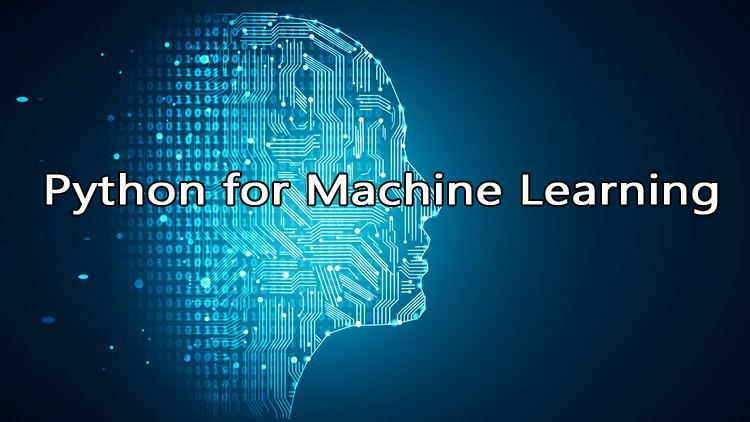- What is Machine Learning?
The ability of the Artificial Intelligence system to gain an understanding by drawing out a different part of data is known as Machine Learning.
The Machine Learning objective is to become proficient from instances and circumstances. Without writing a code, we need to provide the data to form algorithms and can construct various logic for the data provided.
In future, Python for Machine Learning is a preferable approach for:
- Speech recognition
- Natural language processing
- Computer vision
- Medical outcomes analysis
- Robot control
- Computational biology
- Introduction to Machine Learning
- Python for Machine Learning is a well-known platform used for research and development. It is a comprehensive language with a number of modules, packages and libraries that facilitate diverse ways of accomplishing a task.
- Libraries of Python like NumPy, Pandas, SciPy, Scikit-Learn, and Matplotlib are used in data science and data analysis. They are used for creating machine learning algorithms that are scalable.
- Python executes popular machine learning techniques such as Classification, Regression, Recommendation, and Clustering.
- Python for Machine Learning offers an organized framework for performing data mining tasks on immense volumes of data effectively in a very short period of time.
- Advantages of Machine Learning
- Powerful Processing
- Better Decision Making & Prediction
- Quicker Processing
- Accurate
- Affordable Data Management
- Inexpensive
- Analyzing Complex Big Data
- Process Involved in Machine Learning using Python
-
- Defining a Problem
- Preparing Data
- Evaluating Algorithms
- Improving Results
- Presenting Results
- Various Machine Learning Techniques
Some techniques in this Machine Learning using Python is as follows
- Classification
- Categorization
- Clustering
- Trend analysis
- Anomaly detection
- Visualization
- Decision making
- Machine Learning in a Nutshell
- Machine Learning is a subspace of Artificial Intelligence where computer algorithms are used to learn from data and information. Machine learning computers can transform and build-up their algorithms all by themselves.
- Every machine learning algorithm has three components:
- Representation
- Evaluation
- Optimization
- Features of Machine Learning
- Machine Learning is compute-intensive and generally requires a huge tedious amount of training data.
- It involves recurring training to improve the learning and culpability of algorithms.
- As new data sets get added, Machine Learning training can be automated for learning new arrangements and adapting its algorithm.
- Machine Learning Algorithms
- Machine Learning can learn from labeled data (known as supervised learning) or unlabeled data (known as unsupervised learning).
- Algorithms involving unlabeled data, or unsupervised learning, are more complex than those with the labeled data or supervised learning
- Machine Learning algorithms facilitate rational decisions in subjective areas as well.
- Concepts of Machine Learning using Python
Machine Learning can be classified into three categories as mentioned below:
- Supervised Learning
- Unsupervised Learning
- Semi-supervised learning
- Different ways of Learning
- Supervised (inductive) learning – Includes desired outputs
- Unsupervised learning – Does not include desired outputs
- Semi-supervised learning – It includes a few desired outputs
- Reinforcement learning – It helps to get rewards from a sequence of actions
- Supervised Learning
- A greater number of practicals in machine learning uses supervised learning.
- In supervised learning, the system tries to learn from the past examples that are given.
Note: This approach is indeed similar to human learning under the supervision of a teacher. The teacher gives good examples for the student to memorize, and the student then derives general rules from these specific examples.
Categories of Supervised learning
Supervised learning problems can be divided into two parts which are as follows:
- Classification: It means when the output variable is a category or a group, such as black or white or spam and no spam.
- Regression: It is said to be a regression problem when the output variable is a real value, such as “Rupees” or “height.”
- Unsupervised Learning
- In unsupervised learning, the algorithms are left to themselves to locate compelling structures in the data.
- It is said to be unsupervised learning because unlike supervised learning above, there are no given correct answers and the machine itself finds the answers.
- When data contains only some indications without any description or labels, it is up to the coder or to the algorithm to find the structure of the underlying data, to find hidden patterns, or to determine how to describe the data. This type of data is called unlabeled data.
Categories of Unsupervised learning
Unsupervised learning problems can be further classified into the following problems.
- Association: An association rule learning problem is where you want to find the rules that evaluate huge portions of your data, such as “people that buy X also tend to buy Y”.
- Clustering: It is where you want to determine the inherent groupings in the data, such as grouping customers by purchasing behaviour.
- Reinforcement Learning
- A computer program will associate with a vigorous environment in which it must perform a particular goal (such as playing a game with an opponent or driving a car). It helps to provide feedback in terms of rewards and punishments as it navigates its problem space.
- Semi-supervised learning
- If learning samples are labelled, however, some others are not labelled, then it is known as semi-supervised learning. It uses a large amount of unlabelled data for training and a small amount of labelled data for testing. It is applied in cases where it is extravagant to acquire a fully labelled dataset while more practical to label a small subset.
This brings us to the end of the blog on Python for Machine Learning. Python is a widely-used programming language for various applications. Incorporating Python in your programming activities will surely help you perform better. You can also take up a Python for Machine Learning course and enhance your skills.
